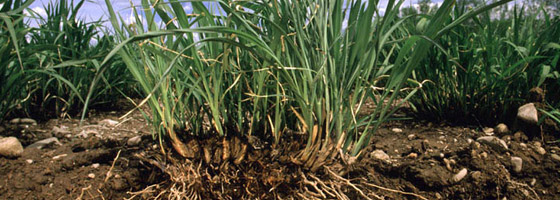Real-time nitrate monitoring

High levels of nitrate are becoming increasingly problematic for many surface waters across the globe. Excess nitrate in the environment can become toxic for both humans and wildlife. Levels above 10 ppm are unsafe for human consumption, according to the U.S. Environmental Protection Agency. Moreover, levels that exceed 30 ppm can inhibit growth, impair the immune system, and cause stress in exposed aquatic species.
More commonly, nitrate is a prevalent cause of nutrient loading, or eutrophication. The presence of nutrients like nitrogen and phosphorus increase algal growth, which can deplete dissolved oxygen in the water and severely harm water quality. At it’s most severe, this process can even lead to anoxic “dead zones,” such as those found in the Gulf of Mexico and Lake Erie. These are areas — generally deeper into the central basin of a water body — that are completely devoid of oxygen and thus cannot support most aquatic life.
Because of the continued presence of excess nitrates in waterways and the impacts it has on the environment and human use, it is often imperative to monitor and track nitrate concentrations. Monitoring nitrate along the waterways that flow into a lake or estuary is often especially useful. Not only does this data help to refine nutrient loading models, it can also more specifically assist with gauging the impact of nitrogen removal efforts like constructed or natural wetlands.
Grab samples taken for lab analysis are often used for nitrate measurements. However, depending on factors such as the flashiness of stormwater in the area and size of the water body being studied, it’s often difficult to safely attain accurate measurements through such manual collection efforts.
Instead, real-time continuous monitoring systems can provide a much more feasible and reliable means of data collection. With continuous nutrient loading data, it’s possible to quantify short-term events that would be missed by manual sampling.
Monitoring nitrate in real-time is possible with ion selective electrode-based sensors, and now there are even some instruments capable of continuous nitrate monitoring that utilize wet chemistry in-situ.
In addition to standalone nitrate sensors, multi-parameter sondes can be equipped with ISE nitrate sensors along with additional water quality probes. Nitrate sensors are often complemented with probes capable of measuring temperature, specific conductivity, salinity, pH, dissolved oxygen, and turbidity. Furthermore, stage and/or velocity sensors can help better correlate hydrologic conditions with nitrate loading. Both types of hydrologic measurements can help to estimate flow discharge.
All sensors can be integrated with data loggers that are capable of utilizing real-time telemetry. NexSens terrestrial and submersible data loggers, for example, support spread-spectrum radio, cellular, and Iridium satellite communication packages. This allows data from the field to be regularly and automatically transmitted to a base station computer running appropriate software to interface with the data loggers.
Data from the remote sites can be analyzed with software like NexSens iChart, which can perform numerous statistical analyses, create graphs, output reports, and even upload measurements to live Internet datacenters.
For more information about nitrate monitoring solutions, contact a Fondriest Environmental application engineer at 888.426.2151 or email customercare@fondriest.com.




0 comments